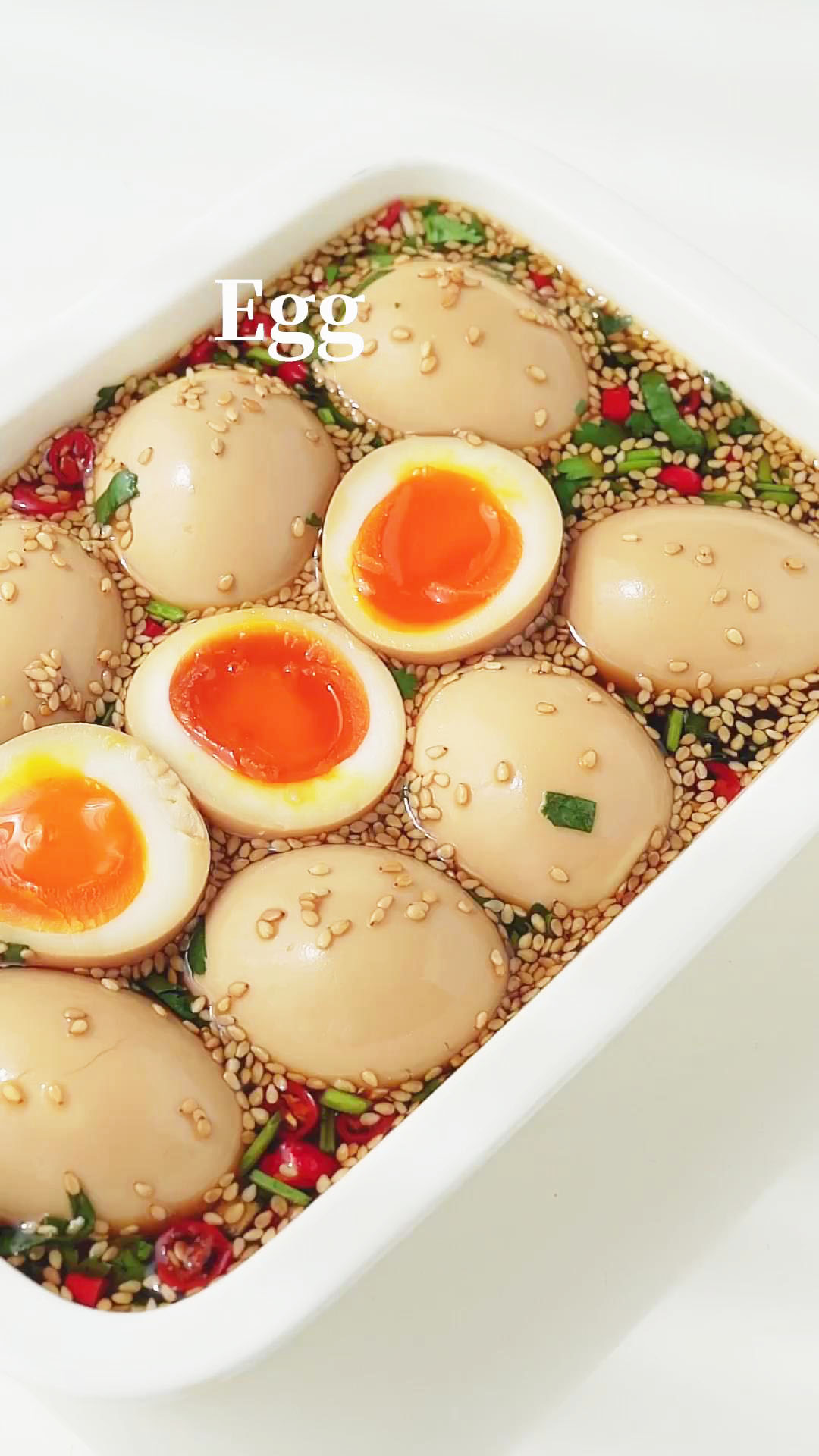Over the past few days, I’ve been eating so much kimchi that I need to buy a new bottle/packet every 3-4 days. I realised I’ve spent a lot of money on kimchi so I decided to make my own at home. I can’t believe it’s been 2 years since I’ve made my own kimchi! 2 years ago, I made kimchi the easy way but this time round I decided to add an Asian pear and yellow onion (instead of sugar) as their natural sweetness makes the kimchi taste even better. If you want to reduce the prep time, you can go ahead with the easier recipe.
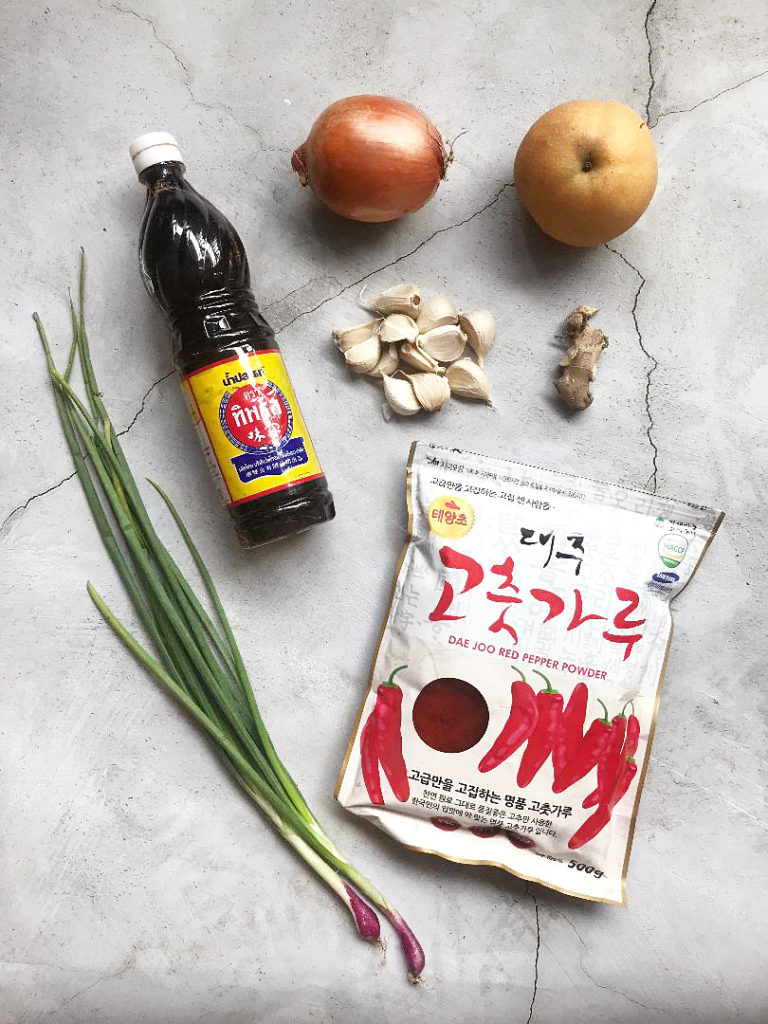
All you need are these: napa cabbage (not in picture), gochugaru (Korean chilli powder), spring onion, fish sauce, garlic, ginger, yellow onion and Asian pear. My recipe calls for an optional ingredient – cincalok/saeujeot/fermented shrimp – which you can add if you have. I didn’t add cincalok for this round of kimchi but I’ve tried adding it before and it does add more depth to the flavour of the kimchi!
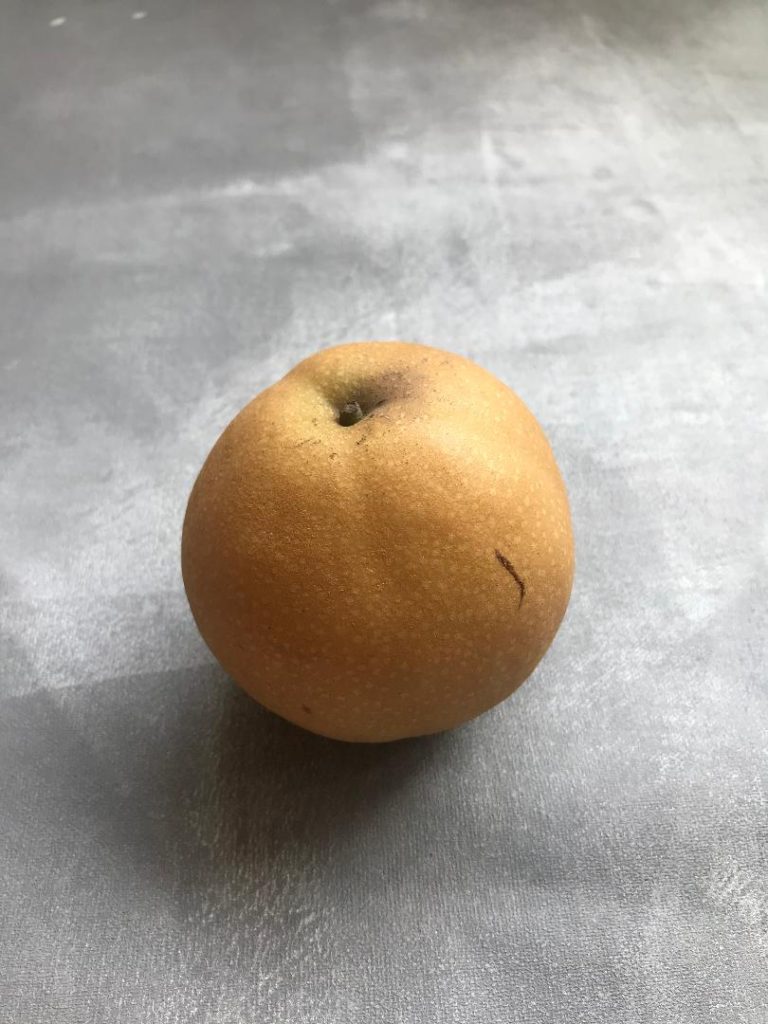
The Asian pear is round and yellowish-brown, very different from the green pears that we usually see. It will add a good deal of natural sweetness to your kimchi, and you can easily get it at most supermarkets. If you don’t have this type of pear, you can use an apple instead, but the taste might differ slightly.
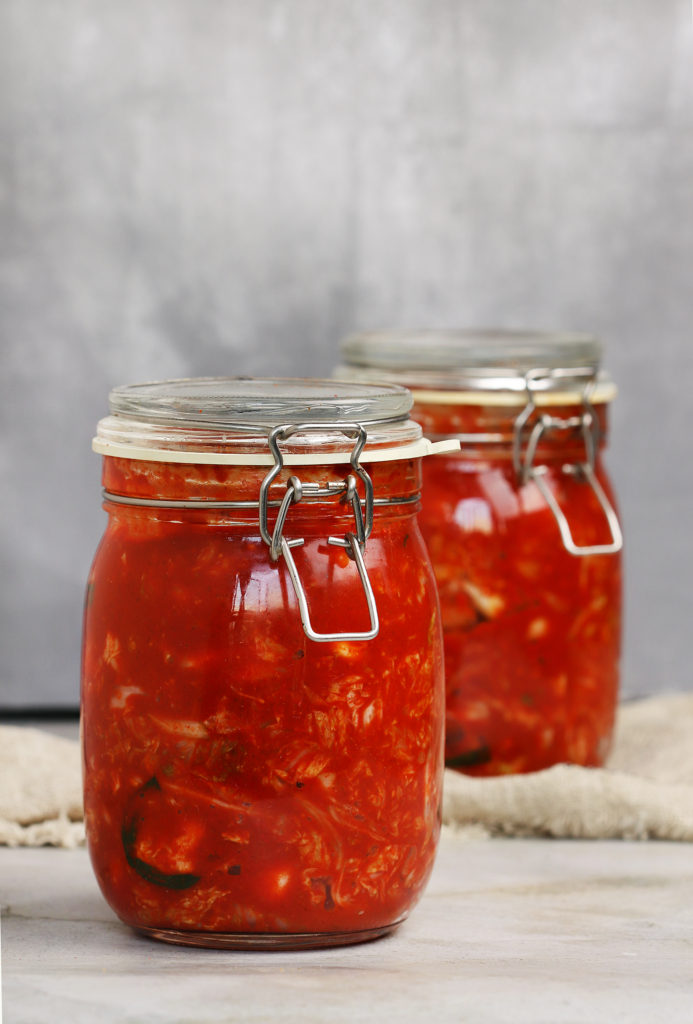
After making the kimchi, store them in air-tight jars and let them ferment at room temperature for 2-4 days. When they taste sour enough to your liking, transfer them to the refrigerator. They should last for at least 1 month if stored properly.
Here are two IMPORTANT things to take note of:
Pack kimchi tightly in a jar to minimize air exposure, but avoid filling the jar to the brim. While fermenting, countless air bubbles will form and some allowance needs to be given for them to escape. If your jar is fully filled, the liquid in your jar will overflow during the fermentation period, causing a big mess. You may want to put a baking tray below the jars to collect the liquid.
Greater exposure to air means a greater chance of mould developing on the kimchi. If you do not have enough liquid to keep the kimchi entirely submerged, you can add some water into the jar. I didn’t because I don’t want to dilute the kimchi juices. What you can do is ensure that the kimchi not submerged in liquid are covered with chilli paste, which can help in preventing mould formation. Also, during the fermentation period, the cabbage will release water so the liquid level will rise in due time.

The resultant kimchi is soft yet crunchy, spicy and savoury. I feel that the best part about homemade kimchi is you will get a lot of kimchi juice, as compared to if you buy the ready-made ones from supermarkets.
My recipe calls for 2kg of napa cabbage, which can make about 2.5kg of kimchi. Feel free to halve the recipe if you won’t be able to eat so much kimchi!
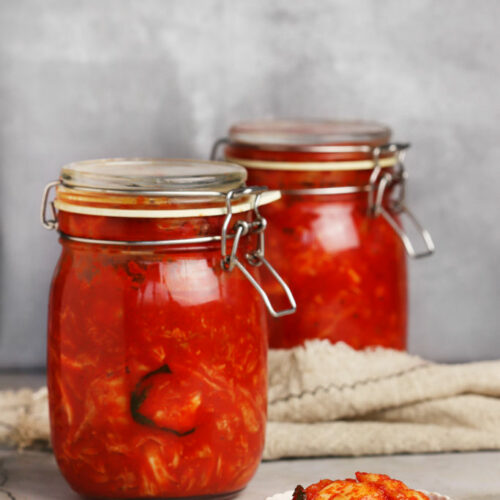
Cabbage Kimchi
Ingredients
- 2 kg napa cabbage
- 8 stalks spring onion cut into matchsticks
- 1 medium Asian pear skin removed
- 1 medium yellow onion
- 12 cloves garlic
- 10 g ginger
- 1.50 cups gochugaru Korean chilli powder
- ½ cup fish sauce
- ¼ cup cincalok/saeujeot/fermented shrimp optional
Instructions
- Wash napa cabbage thoroughly. Remove blackened outer leaves if necessary. Remove the stalk then chop cabbage into bite size pieces.
- Place cabbage in a large basin and sprinkle salt onto the cabbage. Massage salt into the leaves, then add enough water just to cover the cabbage. Leave cabbage to soak for at least 1.5 hours, rotating the cabbage from top to bottom every 30 minutes.
- Once cabbage is soft, drain away water and rinse cabbage to remove excess salt.
- Cut pear and onion into smaller pieces. In a food processor, add pear, onion, garlic, ginger and cincalok/saeujeot/fermented shrimp (optional), and blend until well combined. Scoop mixture into a bowl, then add spring onion, fish sauce and gochugaru (Korean chilli powder) and mix well. Note: I didn't add cincalok (fermented shrimp) to my kimchi but adding it will give the kimchi more depth of flavour.
- Using plastic gloves, mix the chilli paste into the cabbage until all the cabbage are well covered with chilli paste.
- Store the kimchi in air-tight jars and ferment at room temperature for about 2-4 days. Air bubbles and a sour smell are signs of the kimchi fermenting. Once fermented enough to your liking, transfer the kimchi to the refrigerator. The kimchi can keep for up to three months.

